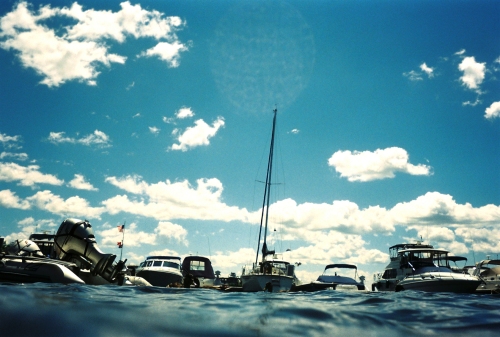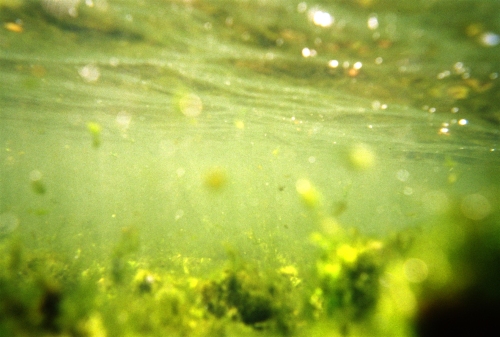 smudge studio 2010
smudge studio 2010
Greetings from Liz and Jamie (smudge studio).
We’re both looking forward to meeting everyone very much.
We wanted to share a few thoughts in the spirit of con-fabing.
Two sentences from the letter describing the Rising Waters Residency stood out for us: “It is inevitable that climate change will require a phased adaptation proportionate to humanity’s ability to reduce consumption. The focus will be on the idea of graceful migration…”
We’re REALLY interested in talking with everyone and maybe doing work on the incredible challenge, insight, and potential of those last two words: “graceful migration.” For a few years now, we’ve been writing and making work that helps us and audiences to “attune to and gracefully be-with” the fast and massive changes of the Anthropocene. We explored how aesthetic practices might inform new modes of responding to (sometimes catastrophic) change—modes that refuse to perpetuate “attempts to rise up and do ‘battle’ with, control or re-design earth forces, or re-inscribe fatalist scenarios.” (Some of that writing appears in our blog).
We now read media coverage of climate change with the Confab in mind. This recent piece in the New York Times makes us think about the potential importance of thinking (and Confabing) across the many, diverse (and globally linked) “localities” that will soon share the need for “graceful migrations.” What might “graceful migration” mean in the context not only of Captiva Island, but Captiva Island in terms if its connections to and interrelations with so many other cities and places needing to migrate at virtually the same time?
New York City is nearly 400 years old; in the worst-case scenario conjured by the research, its chances of surviving another 400 years in anything like its present form would appear to be remote. Miami, New Orleans, London, Venice, Shanghai, Hong Kong and Sydney, Australia, are all just as vulnerable as New York, or more so.
http://www.nytimes.com/2016/03/31/science/global-warming-antarctica-ice-sheet-sea-level-rise.html
s smudge studio 2010
smudge studio 2010
A great update on many things Anthropocene appeared in today’s NYT—we’re in the process of reading through the great resources offered below!
“A Student of ‘Cultural Environmentalism’ Explores the Many Views of Earth’s Anthropocene ‘Age of Us’
A writer who explores the meanings of nature takes a tour of the growing array of views of the proposed Anthropocene epoch of Earth history.
Another article very relevant to the Confab, Captiva Island, and Florida:
And, at the moment of this writing, we get notice of this article:
“NASA Is Facing a Climate Change Countdown: Kennedy Space Center and other NASA facilities near coastlines are facing the prospect of continually rising waters.”
ALL OF THIS gets us thinking …
- … Perhaps the questions—and lived realities on the ground—of “graceful migration” and “rising waters” will, increasingly, become a BUNDLE of questions … all deeply and messily entangled with one another.
- … Perhaps this growing, tangle of questions will ensnare future “migrants” in issues just as urgent and displacing and compelling as needing to take up roots and move.
- … Perhaps, the longer people wait to gracefully migrate, the less and less we/they will be able to migrate gracefully, because the more and more we/they will have to navigate multiple challenges along with migration (economic, health, weather-related, food and water related, resource related).
All of that said, we are super excited about emerging conversations on how important artists might be key actors in human efforts to address such immense challenges and changes. Especially, the conversations about how aesthetic practices might tap and invent “new social energetics” capable of assisting humans in “attuning to and moving-with” change.


Mekong Migration.: From Rice to Shrimp
http://www.bbc.com/news/science-environment-34407061
According to the Southern Irrigation Research Institute, saltwater intrusion destroyed more than 6,000 hectares (60 sq km) of rice field last year.
As inland river water gets saltier, rice farmers across the lower Mekong delta are responding by switching to shrimp farming or growing reeds.
Salt water has been found 60km (37.3 miles) inland.
Also:
1. “Nearly half the delta population now has no access to fresh water and that’s serious,” says Le Anh Tuan, deputy director of the Research Institute for Climate Change.
2. “The sea level rise is bringing up water so fast that our defences against it have failed,” said Ky Quang Vinh, director of the Climate Change Coordination Office, a government agency in Vietnam’s Can Tho, the most populous city in Mekong.
2a….”We’ve STOPPED GROWING MANGROVE TREES on the coast because they only grow if the sea level rise stays below 1.6mm (0.06in) a year, and our work shows that in Vietnam it’s going up by 5mm (0.2in).”
2b…”Several of our sea dykes have collapsed too.”
Scientists at the Mekong River Commission (MRC), an intergovernmental body, also warn that if the sea level continues to rise at its projected rate of around one metre by the end of the century, nearly 40% of the delta will be wiped out.
The MRC covers four countries in the lower Mekong region: Thailand, Laos, Cambodia and Vietnam.
LikeLike